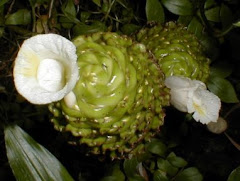
VERNACULAR NAMES
Malay : Halia
English : Ginger
Sanskrit : Adrakam, Ardraka
Hindi : Adrak,Sunthi,Sonth
Kannada : Sunthi
Marathi : Nisam
Gujarati : Sunt
Tamil : Inji
French: gingembre
German: Ingwer
Italian: zenzero
Spanish: jengibre
Burmese: cheung, chiang, jeung
Indonesian: aliah
Japanese: mioga, myoga, shoga
Thai: k(h)ing (green)
HISTORY
Ginger is native to India and China. It takes its name from the Sanskrit word stringa-vera, which means “with a body like a horn”, as in antlers. Zingeber been important in Chinese medicine for many centuries, and is mentioned in the writings of Confucius.
It is also named in the Koran, the sacred book of the Moslems, indicating it was known in Arab countries as far back as 650 A.D. It was one of the earliest spices known in Western Europe, used since the ninth century. It became so popular in Europe that it was included in every table setting, like salt and pepper.
Chinese and Ayurvedic practitioners have relied on ginger for at least 3,000 years for its anti-inflammatory properties, and have used it as a “carrier herb", one that enables other herbs to be more effective in the body. In China, for example, ginger has been used to aid digestion and treat stomach upset, diarrhea, and nausea for more than 2,000 years.
Since ancient times, ginger has also been used to help treat arthritis, colic, diarrhea, and heart conditions. In addition to these medicinal uses, ginger continues to be valued around the world as an important cooking spice and is believed to help the common cold, flu-like symptoms, headaches, and even painful menstrual periods. Native to Asia where its use as a culinary spice spans at least 4,400 years, ginger grows in fertile, moist, tropical soil.































































Hi i'm David,
ReplyDeleteyou have a good post here. But can ginger be use in reducing weigth loss? for me i think so.
then check out these site:
http://weight4lossforever.blogspot.com